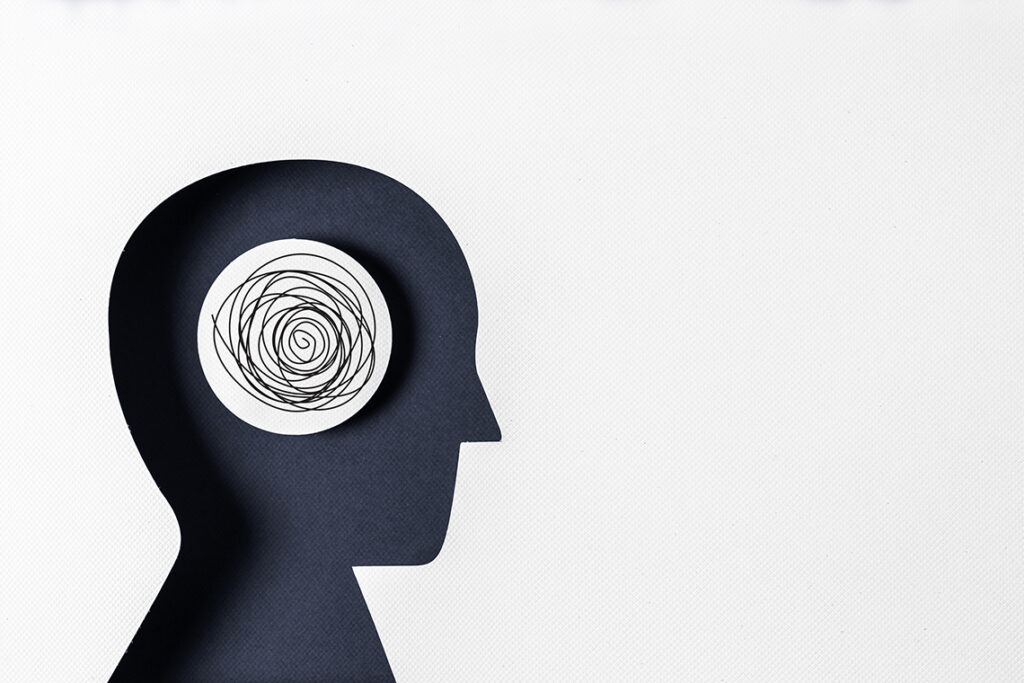Emotions exist in our lives to teach us about ourselves and the world around us. In this guided meditation Dr. Kate Truitt will help you learn more about your specific worries or concerns and connect with your internal wisdom.
Emotions exist in our lives to teach us about ourselves and the world around us. In this guided meditation Dr. Kate Truitt will help you learn more about your specific worries or concerns and connect with your internal wisdom.
Did you know that worry actually does have utility? It’s a yellow flag to our system that says Worry will grow when we don’t pay attention to that flag and begin to create an action plan. In this video we will explore how to understand the reason behind our worry (finding the WHY) so we can be empowered to start taking action. The goal of worry is to make us pay attention to something in order to make us take a step to change whatever the brain is noticing as a concerning piece of data.
Why do we worry about things in the future? Our brain is designed to focus us on all of the worst case scenario stories (this is called negative bias) in order to to make sure we have a plan of action for whatever will happen. The problem with fear based worst case scenario stories is that they are often scary and our amygdala will inadvertently trigger us into cycles of anxious rumination, fear, and even feelings of freeze (e.g. procrastination, fatigue, depression, and worse). In this video Dr. Kate explores anticipation anxiety as well as future focused worry and introduces a concept know as setting S.M.A.R.T. goals.
By Dr. Kate Truitt
Worry is becoming a dominant aspect in our lives in 2020, including my own. I have noticed lately that I am being plagued by the worry cycle. Even though someone may be an expert on worry and what causes it doesn’t mean they’re immune from it. I am human and these are difficult times.

In this blog I have often raised the point that 90 percent of our present moment is defined by our experiences from the past. These structural frameworks, or schemas, are how our brain makes sense of what is happening in the world right now. If we didn’t have these schemas our system would be constantly flooded with information we would have to process in real time. They are also a big part of what causes us to worry.
But why do we worry? So often my patients will tell me that worry is dumb, and that there is no need for it. Actually, we do need to worry, but we need to put it into an appropriate context. When we are trying to understand our worry so it can be managed, it is important to go back to the beginning of the worry process and notice the “Why” that began the whole thing.
When the worry process begins our brain’s amygdala is simply trying to throw up a yellow flag. It’s saying: “Something is wrong! You need to pay attention to this!” You can see from what is happening here that our survival brain plays a dominant role in this process.
If we’re able to get back to the “Why” of the original yellow flag, then we are able to do something about the worry and begin moving into action. That’s the goal of worry. Worry is telling us to pay attention so we can take an action. That is one of the fundamental elements of brain resilience—checking in with mind and body to notice and then inquire:
“My brain is giving me data.
This is why my brain is giving me data.
What steps can I take now?”
What data is your amygdala giving you over and over again these days? What worries or concerns is your amygdala chewing on? Imagine your worries and concerns are like a dog refusing to stop chewing on a bone. How do we get a dog to stop chewing on a bone? Either the bone goes away, or we take the bone away—right? During these trying times so many things are going on in our world that are beyond our ability to control, so we can’t necessarily take that bone away from our amygdala. What are we going to do instead with that bone? How do we put it to use so our brain can’t chew on it anymore? If my dog is chewing on a bone and she won’t give it up, I’ll give her a toy and she gets distracted. Just as with the dog, we need to give our brain a new job. And, I also need to figure out where on earth my dog got that dang bone! Digging in the trash from the day before? Similarly, we need to give our brain a new job and also identify what sparked this worry process.
Ask yourself, “Why did my brain throw a yellow flag of worry at me?” If you notice that you are circling around a worrisome construct and your mind just won’t let that thing go, try the following easy worry exercise to get at the why.

UNDERSTANDING THE CATEGORIES OF WORRY
Earlier I mentioned the resiliency-building steps of checking in with your mind and body, realizing that this data is coming in from the brain, asking why it is coming in and then using that information to create an action plan. Take a deep breath then let it out, then invite your mind to share with you what your worry feels like. Notice if your worry has a special home in your body. Does it have a shape? A weight? A color? A certain energy? When you turn your attention toward the idea of worry, where does that live?
In taking steps to manage worry I have found it is helpful to parse worry into four categories:
The last category is the most important because it most often gets shoved into the background, even though this is the one we have the most power to impact. I’d like you to go back to that first category and set it aside. We can acknowledge our brains for reminding us, but there is nothing we can do to change what happened in the past.
Instead, think about that second category—anticipatory worry about the future—and write down what those worries are. With those things you can proactively take steps to create your own outcome. You have a lot of agency in those experiences that are coming up in the future.
When it comes to that third category—worrying about things that are outside of our ability to control—let’s invite them to move a side as well. It is rare for us to be able to impact things that are out of our scope of control.
That leaves us with the things we are worried about in the here and now—our fourth category. How many items are on that list? If you notice there is still some pressure coming in from an experience from the past—perhaps an argument with a spouse or the way you interacted with a colleague—write those down and then next to it write a plan of action such as, “I’m calling the person,” or “I’m repairing the argument.”
Then check back in with that worry part of your brain about what else is happening right now. Those right-now worries are the primary yellow flags we talked about early in this article—the ones we want to take action on. If a worry from the past or something that is beyond our control is intruding, check in and determine whether that worry belongs somehow in the context of the present worry, and whether you can do something to change it. If not, then set it aside, because there is no reason to continue to worry about it.
Notice your worry in your body and mind, notice where it lives. If it is really overwhelming, do some CPR for the Amygdala®. Do the self-havening touch and some brain games. You’ll find some of these worry exercises in the videos I have provided in the sidebar of this article. That will help soften the amygdala and let her know that you are taking steps to calm her and that you are moving into a state of relationship with your worries.

WORRYING ON INTO THE FUTURE
Another great opportunity we have with worry is in anticipatory worry, because, as with worry about the present, we have some agency to do something about it. We worry about the future for two basic reasons 1) because we want to construct the perfect outcome, or 2) if our amygdala is running the show, because she doesn’t want us to die. The amygdala’s approach is simple, and necessary, but fortunately, life-threatening situations don’t arise in our lives too often.
Remember, worry is mostly about our brain trying to figure out the best course of action. Because of neuroplasticity, which you can read more about in our previous blog article, we have so much power to create the brain we want to live with.
With anticipatory worry, our brain is saying I’m concerned about the future and I just need to know we’re going to be alive. I understand that can manifest in many ways that seem like they have nothing to do with life and death, but remember that our amygdala is the thing that is guiding the worry process, so everything always comes back to survival. We want to always circle back to the why.
One way to manage anticipatory worry is through creating SMART goals. A SMART goal is one that is Specific, Measurable, Achievable, Realistic and Timely. You can learn more about that in the most recent video in my series on worry on our YouTube Channel. Also be sure to explore the resources I have provided in the sidebar on this page.
.
———————————
Federal Department of Consumer Affairs and Board Of Behavioral Science Notifications For Consumers